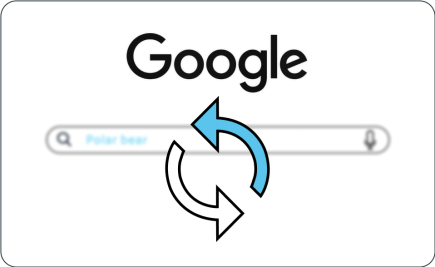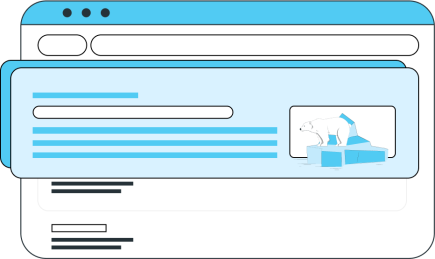As HTML coding elements, h1, h2, and h3 tags are used to structure and create a hierarchy within a web page. While they are invisible to the Internet user, these HTML tags are essential nonetheless, both to facilitate reading and for the website’s search engine optimization.
Thus, if you’re going to write them with the intent of optimizing their effects on SEO, there are some rules to follow. From the all-important h1 tag to the demure h6 tag, to the semantically rich h2 tag, and the doubled up h3 subheadings… Here are our best tips to help you write them all and use each of them to the fullest.
What are HTML Tags (h1 h2 h3) used for?
What is an HTML Tag?
As a key element of the HTML (Hyper Text Markup Language) coding system, the HTML tag is a small piece of HTML text that introduces headings, images, videos, links, as well as some layout elements in HTML language (text tags, bullet lists, paragraphs, tables, end tags…). It is made up of two angle brackets < > that surround the name of the element used and – in some cases – the SRC attribute. These HTML attributes indicate the source of an image or video. HTML tags include hn tags, which indicate subheadings numbered by order of importance from h1 to h6.
Good to know: Beyond keeping all the h1 h2 h3 tags and HTML elements that constitute a web page well organized, the presence of a style sheet written in the CSS language (Cascading Style Sheets) is required to dictate their layout (spaces between paragraphs, list items, description list, margins, font, size, colour, block level elements, etc.)
What is the Role of the HTML Tags (h1 h2 h3)?
HTML h1 h2 h3 tags are necessary for two main reasons – to streamline the on-screen reading experience for the Internet user, and to optimize the site for search engines.
Did you know that we read slightly more slowly on a screen than we do on paper? Until recently, the exact figure was estimated to be 25 per cent slower, based on studies conducted by Jacob Nielsen in 1997. A new study carried out by the same web developer in 2010, now places it at about 6 per cent.
In other words, digital reading is catching up with reading on paper! So long as the content is suited for the screen it’s being read on (smartphone, tablet, computer), that is. And the text also needs to be well structured through the use of HTML h1 h2 h3 tags. The idea is that even if they only read the titles, the user should be able to understand what the content is about!
HTML tags also have an impact on search engine optimization. When written properly, they not only allow bots (Google bots, in particular) to better grasp the content of the web page, but also improve their understanding of it thanks to a clear hierarchy of headings.
And finally, it’s worth noting that a better reading experience for the user does have an impact on SEO. It limits the bounce rate (when a visitor leaves the page without clicking any further) and promotes longer visits on the site. Google values these two characteristics greatly when assessing a website.
How to Write a Good h1 Tag?
Why is the h1 Tag Important?
In SEO, the HTML tag known as h1 is the most important one in the page’s entire hierarchy, as the words it contains allow Google to infer its general topic and precise subject matter. To search engine bots, the contents of this h1 tag is more important than that of all the other hn tags combined. Which is why it should imperatively contain strategic keywords.
Good to know: Even though not all SEO experts seem to agree, at Eskimoz, we strongly recommend writing a h1 tag that is different from the Title tag. For starters, this allows you to work on the page’s long-tail keywords, including variations on the main keyword, such as synonyms and different grammatical forms. And then, due to the Title tag being limited to 65 characters, you can use the h1 tag to go a bit further (within reason, of course). And finally, while the former is designed to inspire users to click on the page, the latter should inspire them to read – which implies that these SEO tags should be written differently.
5 Tips to Optimize your h1 Tag
Writing optimized HTML tags comes with a few implications which mean you should always apply the following tips when creating your h1:
- Include the main keyword selected for the page in question. If this is done properly, the keyword should be clear and unambiguous.
- Do not exceed 80-100 characters. Ideally, your h1 heading should be 8 words long, tops.
- Never have more than a single h1 tag on a page. Even though it matters more than any other SEO tag, structuring your text properly implies that you should only have one.
- Create a unique h1 tag for every page. We recommend you try not to have your pages compete with one another, which would mean that they are not specific enough.
- Write a true title rather than a string of keywords. A good h1 tag should be both catchy and informative.
How to Optimize your h2 Tags?
How to Use h2 Tags Effectively?
Much like the h1 tag, the h2 tag counts as one of the most crucial SEO tags. Yet, contrary to the page’s main heading, you can use it several times throughout the text to create a coherent structure. H2 tags serve as subheadings that divide up the content into a number of main parts. The idea is to organize parts and paragraphs logically, starting with the h1 tag, followed by an h2 tag, and then h3, and h4 tags (etc.) if you choose to use them.
In addition, the h2 tag needs to reflect the h1 tag’s semantic field. Thus, while the main heading refers to the page’s theme and topic, the first subheading uses the same keywords, to which it adds more information.
Finally, it’s worth noting that the h1 h2 h3 tags are arranged by order of importance for the bots. Optimizing the h2 tags therefore takes precedence over optimizing h3 or h4 tags…
4 SEO Tips
If you are working towards improving your page’s SEO (as well as the reading experience for the user), then, just as you would for the h1 tag, you need to observe certain rules when writing your h2 and h3 tags:
- Avoid isolated HTML tags. If you decide to use subheadings within a part of your text, there should be at least two. For example, avoid using a single h3 tag within an h2 tag.
- Put your subheadings in the correct order. We strictly advise against placing an h3 tag immediately after the h1 tag without including a h2 subheading in between…
- Use h2 tags to broaden the semantic field. In these subheadings, it is best to use variants of the main and secondary keywords.
- Create structure without going overboard. Only texts with 2,000 words or more should have h4 to h6 tags.
There are many free tools available online to help you check for the presence of HTML tags in your text. For instance, you could right-click on your page to “View page source” and display its code. You could also use the HTML Headings Checker from SEO Review Tools, where you just need to put in the URL to get an analysis that will indicate the “Hn Structure”.










